World’s Largest Telescope To Finally See Stars Without Artificial Spikes

One of astronomy’s most iconic sights in an artifact of faulty optics. Here’s how a new, great design will overcome it.
When you look out at the greatest images of the Universe, there are a few sights that light up our memories and fire our imaginations. We can see the planets in our own Solar System to incredible detail, galaxies lying millions or even billions of light years away, nebulae where new stars are being birthed, and stellar remnants that give an eerie, fatalistic look into our cosmic past and our own Solar System’s future. But the most common sight of all are stars, lying everywhere and in any direction we care to look, both in our own Milky Way and beyond. From ground-based telescopes to Hubble, stars almost always come with spikes on them: an image artifact due to how telescopes are constructed. As we prepare for the next generation of telescopes, however, one of them — the 25-meter Giant Magellan Telescope — stands out: it’s the only one that won’t have those artificial spikes.
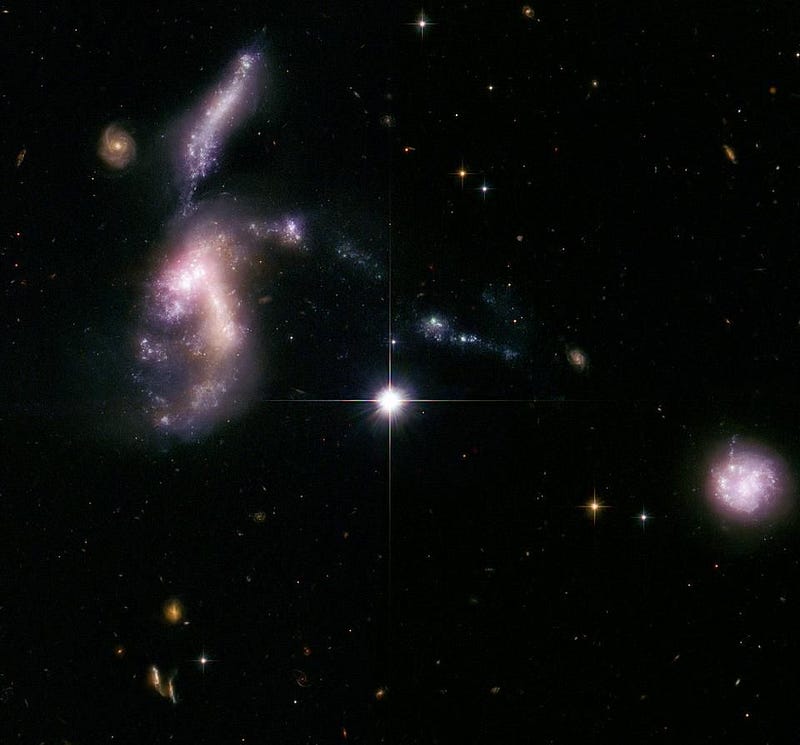
There are a lot of ways to make a telescope; in principle, all you need to do is collect-and-focus light from the Universe onto a single plane. Early telescopes were built on the concept of a refractor, where the incoming light passes through a large lens, focusing it down to a single point, where it can then be projected onto an eye, a photographic plate, or (in more modern fashion) a digital imaging system. But refractors are limited, fundamentally, by how large you can physically build a lens to the necessary quality. These telescopes barely top 1 meter in diameter, at maximum. Since the quality of what you can see is determined by the diameter of your aperture, both in terms of resolution and light-gathering power, refractors fell out of fashion over 100 years ago.
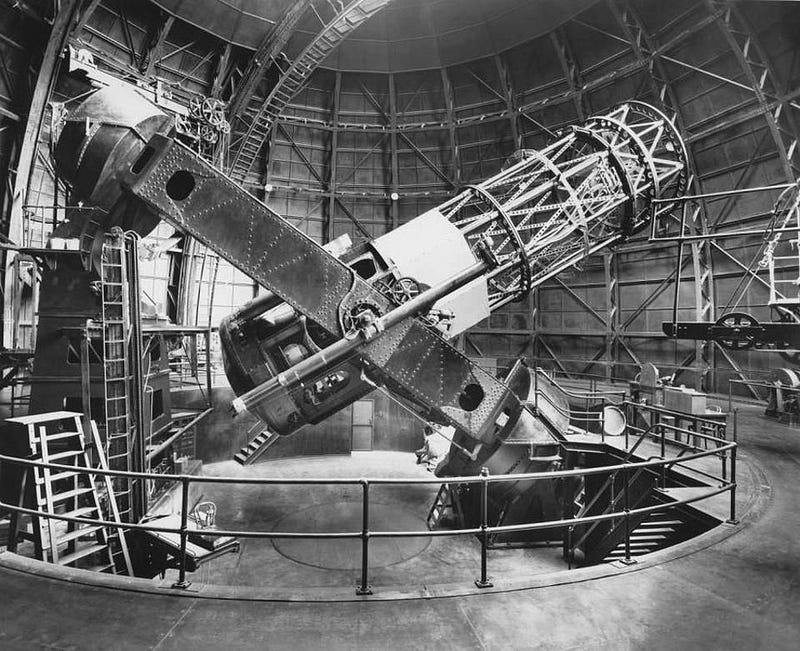
But a different design — the reflecting telescope — can be far more powerful. With a highly reflective surface, a properly shaped mirror can focus incoming light onto a single point, and mirrors can be created, cast and polished to much greater sizes than lenses can. The largest single-mirror reflectors can be up to a whopping 8-meters in diameter, while segmented mirror designs can go even larger. At present, the segmented Gran Telescopio Canarias, with a 10.4 meter diameter, is the largest in the world, but two (and potentially three) telescopes will break that record in the coming decade: the 25-meter Giant Magellan Telescope (GMT) and the 39-meter Extremely Large Telescope (ELT).
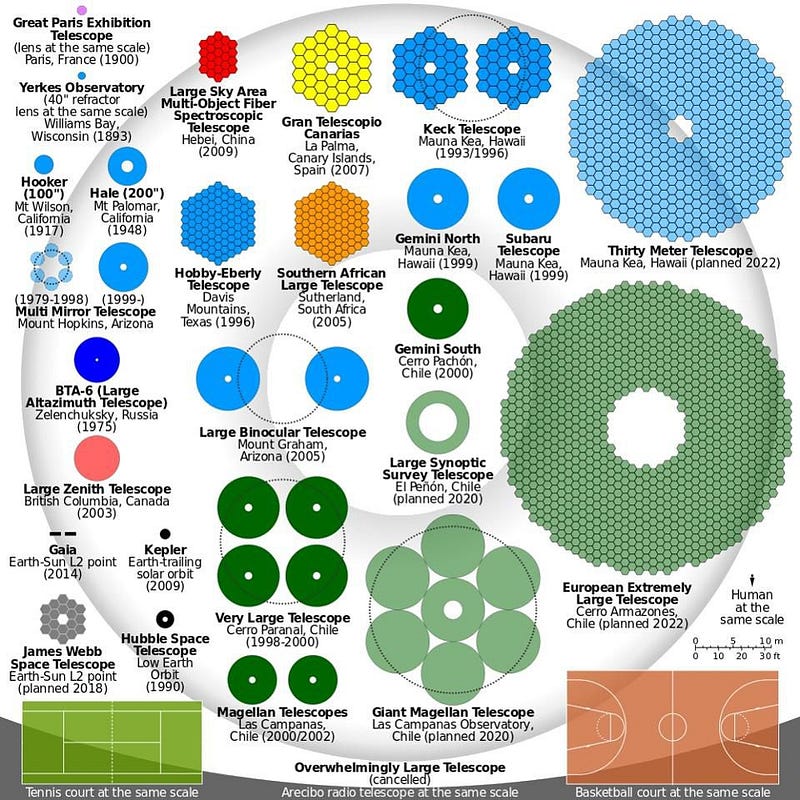
Both of these are reflecting telescopes with many segments, poised to image the Universe like never before. The ELT is larger, is made of more segments, is more expensive, and should be completed a few years after GMT, while the GMT is smaller, made of fewer (but larger) segments, is less expensive, and should reach all of its major milestones first. These include:
- excavations that began in February of 2018,
- concrete pouring in 2019,
- a completed enclosure against weather by 2021,
- the delivery of the telescope by 2022,
- the installation of the first primary mirrors by early 2023,
- first light by the end of 2023,
- first science in 2024,
- and a scheduled completion date by the end of 2025.
That’s soon! But even with that ambitious schedule, there’s one huge optical advantage that GMT has, not only over the ELT, but over all reflactors: it won’t have diffraction spikes on its stars.
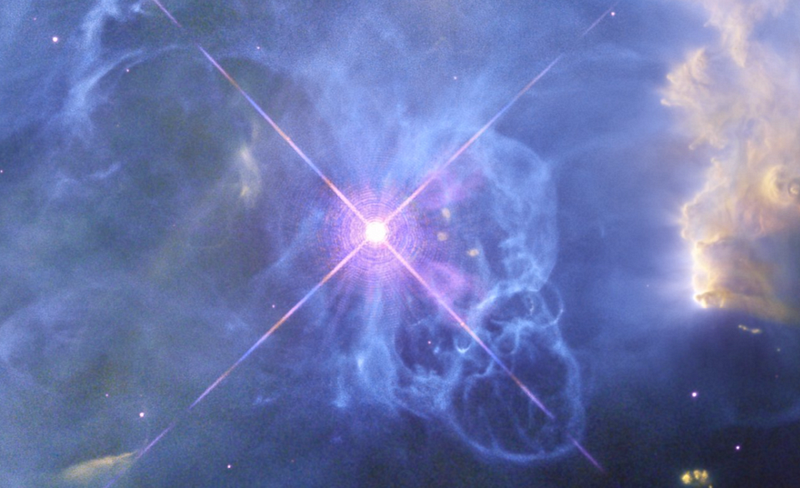
These spikes that you’re used to seeing, from observatories like Hubble, come about not from the primary mirror itself, but from the fact that there needs to be another set of reflections that focus the light onto its final destination. When you focus that reflected light, however, you need some way to place-and-support a secondary mirror to refocus that light onto its final destination. There’s simply no way to avoid having supports to hold that secondary mirror, and those supports will get in the way of the light. The number and the arrangement of the supports for the secondary mirror determine the number of spikes — four for Hubble, six for James Webb — you’ll see on all of your images.

All ground-based reflectors have these diffraction spikes, and so will the ELT. The gaps between the 798 mirrors, despite making up just 1% of the surface area, contribute to the magnitude of the spikes. Whenever you image something faint that unluckily happens to be near something close and bright — like a star — you have these diffraction spikes to contend with. Even by using shear imaging, which takes two almost-identical images that are only slightly mis-positioned and subtract them, you can’t get rid of those spikes entirely.
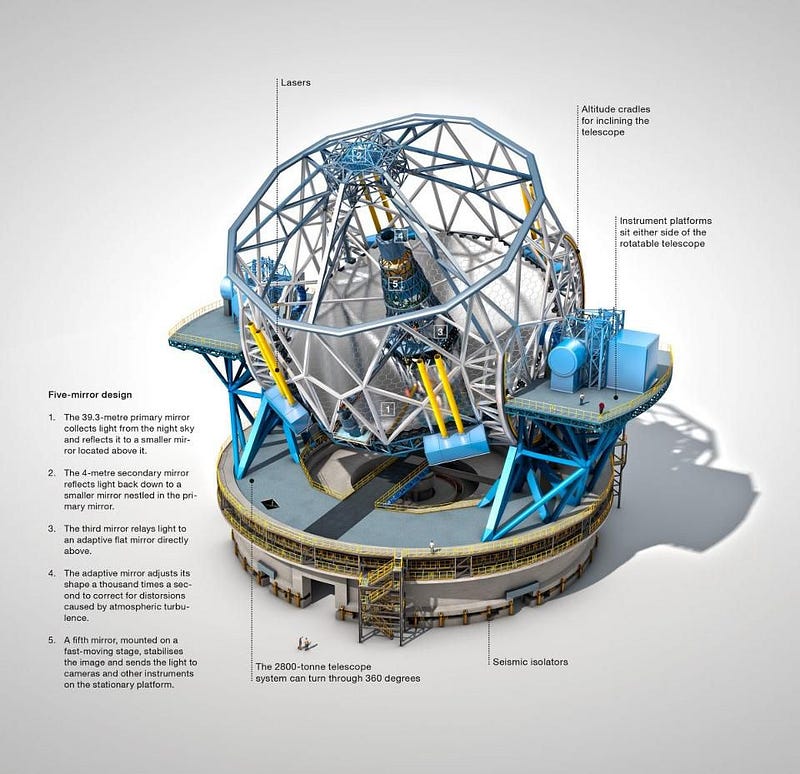
But with seven enormous, 8-meter diameter mirrors arranged with one central core and six symmetrically-positioned circles surrounding it, the GMT is brilliantly designed to eliminate these diffraction spikes. These six outer mirrors, the way they’re arranged, allows for six very small, narrow gaps that extend from the edge of the collecting area all the way into the central mirror. There are multiple “spider arms” that hold the secondary mirror in place, but each arm is precisely positioned to run exactly in between those mirror gaps. Because the arms don’t block any of the light that’s used by the outer mirrors, there are no spikes at all.
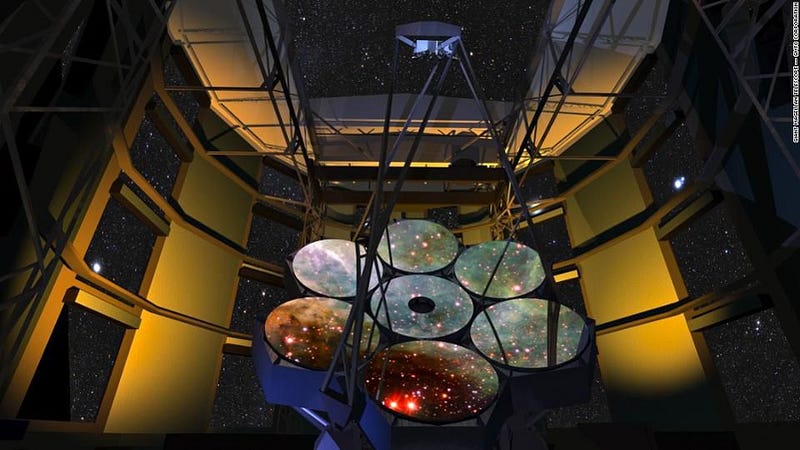
Instead, owing to this unique design — including the gaps between the different mirrors and the spider arms crossing the central primary mirror — there’s a new set of artifacts: a set of circular beads that appear along ring-like paths (known as Airy rings) surrounding each star. These beads will appear as empty spots in the image, and are inevitable based on this design whenever you look. However, these beads are low-amplitude and are only instantaneous; as the sky and the telescope rotate over the course of a night, these beads will be filled in as a long-exposure image is accumulated. After about 15 minutes, a duration that practically every image should attain, those beads will be completely filled in.
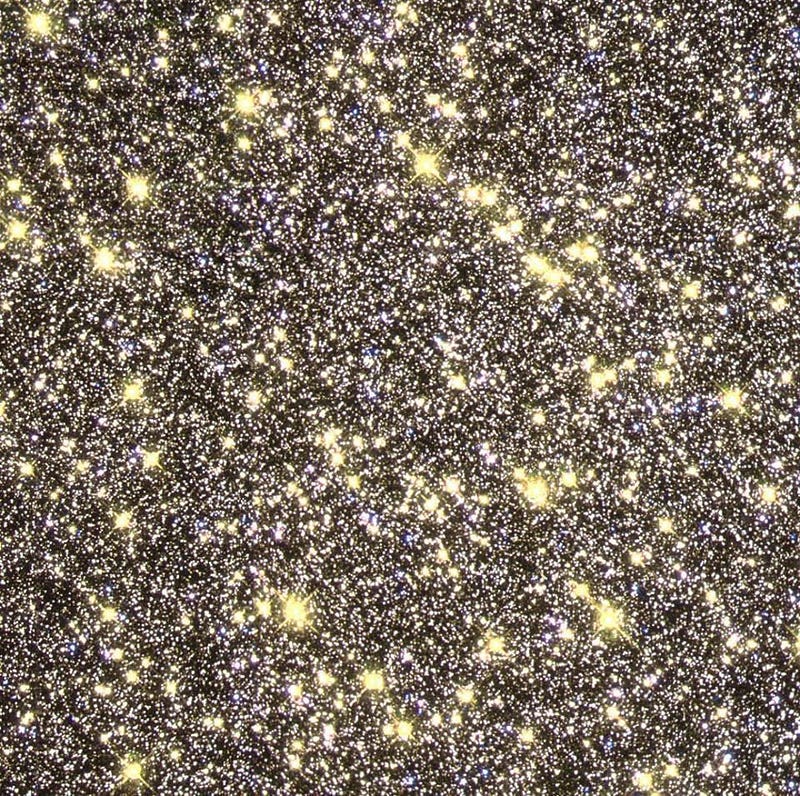
The net result is that we’ll have our first world-class telescope that will be able to see stars exactly as they are: with no diffraction spikes around them! There is a slight trade-off in the design to achieve this goal, the biggest of which is that you lose a little bit of light-gathering power. Whereas the end-to-end diameter of the GMT, as designed, is 25.4 meters, you “only” have a collecting area that corresponds to a 22.5 meter diameter. The slight loss of resolution and light-gathering power, however, is more than made up for when you consider what this telescope can do that places it apart from all others.
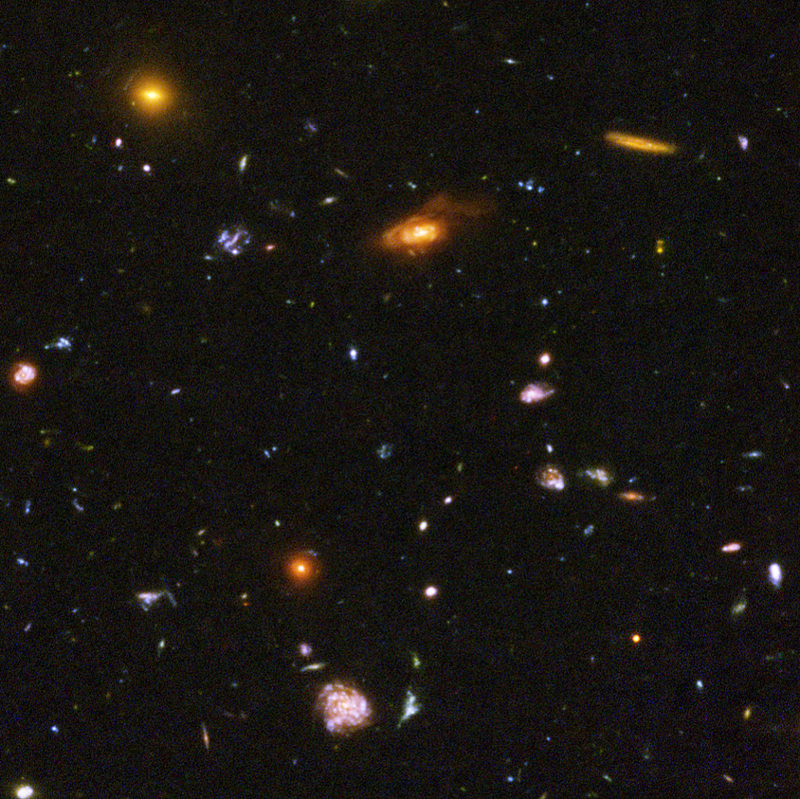
It will achieve resolutions of between 6–10 milli-arc-seconds, depending on what wavelength you look at: 10 times as good as what Hubble can see, at speeds 100 times as fast. Distant galaxies will be imaged out to distances of ten billion light years, where we can measure their rotation curves, look for signatures of mergers, measure galactic outflows, look for star formation regions and ionization signatures. We can directly image Earth-like exoplanets, including Proxima b, out to somewhere between 15–30 light years distant. Jupiter-like planets will be visible out to more like 300 light years. We’ll also measure the intergalactic medium and the elemental abundances of matter everywhere we look. We’ll find the earliest supermassive black holes.
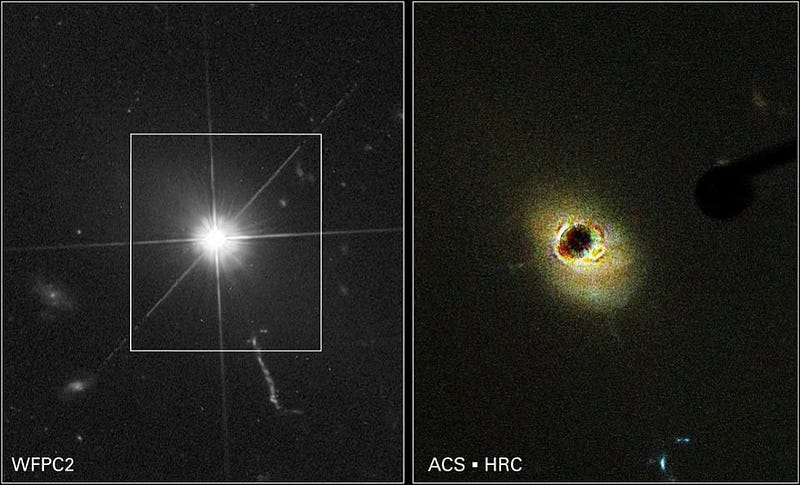
And we’ll make direct, spectroscopic measurements of individual stars in crowded clusters and environments, probe the substructure of nearby galaxies, and observe close-in binary, trinary and multi-star systems. This even includes stars in the galactic center, located some 25,000 light years away. All, of course, without diffraction spikes.
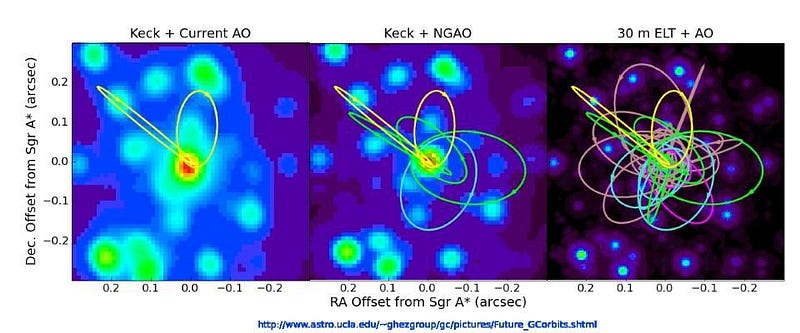
Compared to what we can presently see with the world’s greatest observatories, the next generation of ground-based telescopes will open up a slew of new frontiers that will peel back the veil of mystery that enshrouds the unseen Universe. In addition to planets, stars, gas, plasma, black holes, galaxies, and nebulae, we’ll be looking for objects and phenomena that we’ve never seen before. Until we look, we have no way of knowing exactly what wonders the Universe has waiting for us. Owing to the clever and innovative design of the Giant Magellan Telescope, however, the objects we’ve missed due to diffraction spikes of bright, nearby stars will suddenly be revealed. There’s a whole new Universe to be observed, and this one, unique telescope will reveal what no one else can see.
Ethan Siegel is the author of Beyond the Galaxy and Treknology. You can pre-order his third book, currently in development: the Encyclopaedia Cosmologica.





